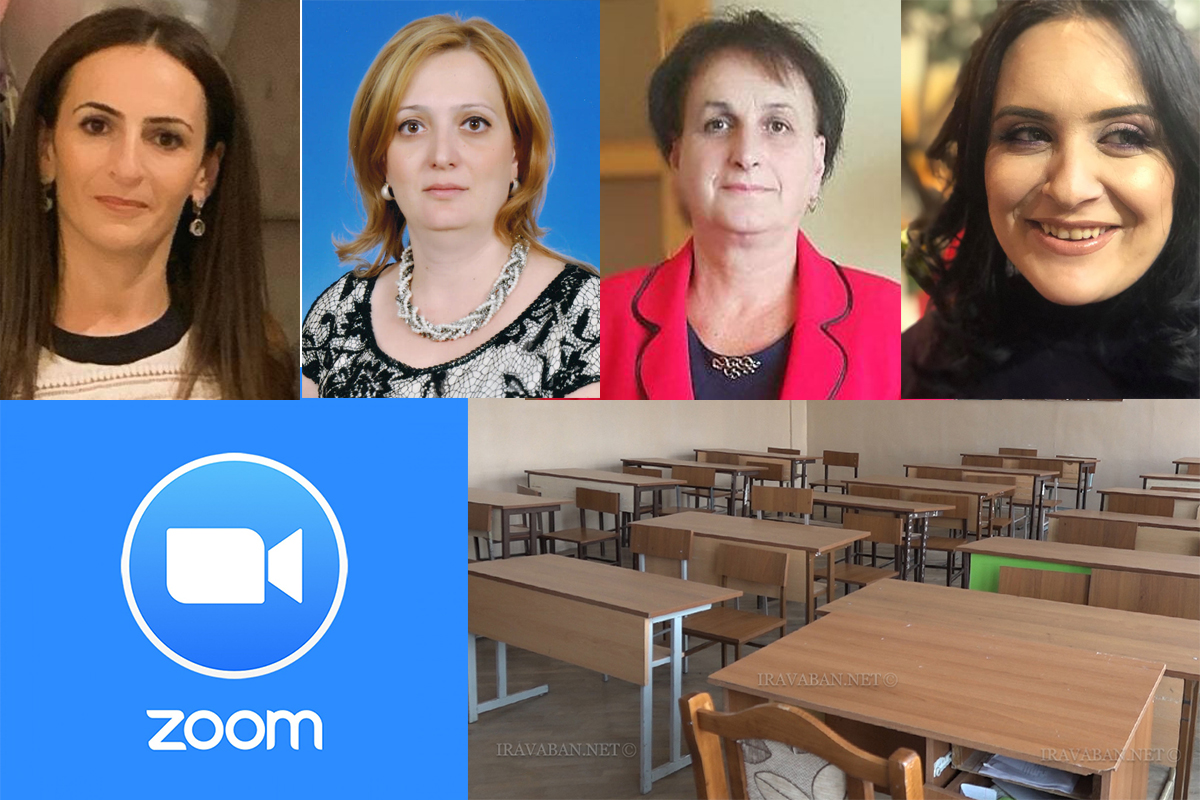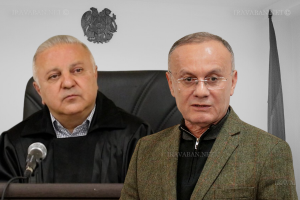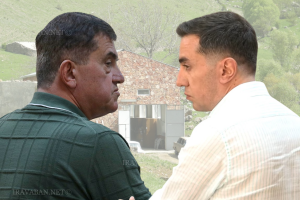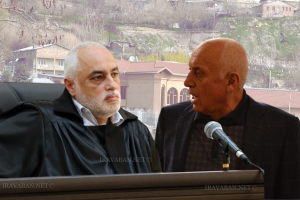Due to the coronavirus, a state of emergency has been declared in Armenia from 16 March to 14 April, with which all educational institutions have been closed. In order to keep students close with their educational programs, a decision was made to transfer to distance education.
The transition provoked a number of conflicting opinions, both good and bad, new opportunities and problems.
In a conversation withIravaban.net, teachers from different schools told about their experience.
First of all, about the positive:
 Tatev Manukyan, a teacher Armenian language at Yerevan’s Manuel Kajaznuni School No. 54, says that almost everyone uses the Zoom platform, which allows the whole class to gather in front of the screen. “The Zoom platform gives us a number of options, such as using an online whiteboard, a slide show that all kids can see. Access to the Internet allows you to watch and discuss a video together, play interactive games that make the lesson more interesting. I often use LearningApps, Quiz programs, it has caused a lot of excitement among children, as if they are looking forward to every lesson. We are able to do team work as well,” she said.
Tatev Manukyan, a teacher Armenian language at Yerevan’s Manuel Kajaznuni School No. 54, says that almost everyone uses the Zoom platform, which allows the whole class to gather in front of the screen. “The Zoom platform gives us a number of options, such as using an online whiteboard, a slide show that all kids can see. Access to the Internet allows you to watch and discuss a video together, play interactive games that make the lesson more interesting. I often use LearningApps, Quiz programs, it has caused a lot of excitement among children, as if they are looking forward to every lesson. We are able to do team work as well,” she said.
Gayane Ordyan has been teaching mathematics at Yerevan’s Nver Safaryan Basic School No. 164 for 5 years. According to her, there are many good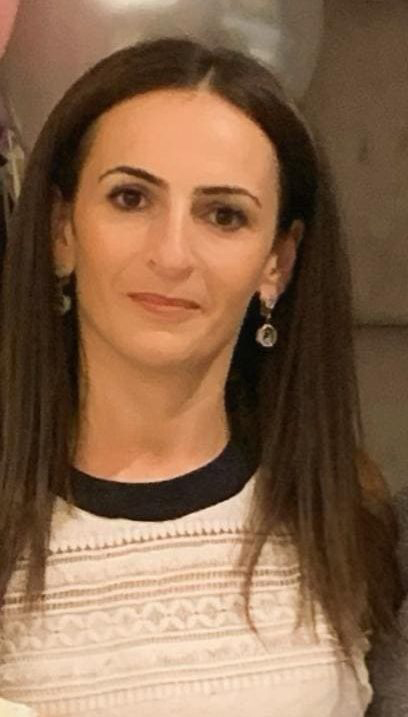 aspects of distance learning. “For a student who wants to study, this is considered a full-fledged course, no one interferes, and the child works individually with the teacher. Of course, it’s a little difficult for those who don’t want. But this platform allows me to use different tools, for example, on the Zoom platform I display the textbook, the child works with his textbook, additional material. Innovation and mastering of new technologies are inspiring. I use the screen for 100%, for example, I give color shades to geometric images, I make them more accessible, available in different colors than at school, I can show it on the blackboard,” the teacher explains.
aspects of distance learning. “For a student who wants to study, this is considered a full-fledged course, no one interferes, and the child works individually with the teacher. Of course, it’s a little difficult for those who don’t want. But this platform allows me to use different tools, for example, on the Zoom platform I display the textbook, the child works with his textbook, additional material. Innovation and mastering of new technologies are inspiring. I use the screen for 100%, for example, I give color shades to geometric images, I make them more accessible, available in different colors than at school, I can show it on the blackboard,” the teacher explains.
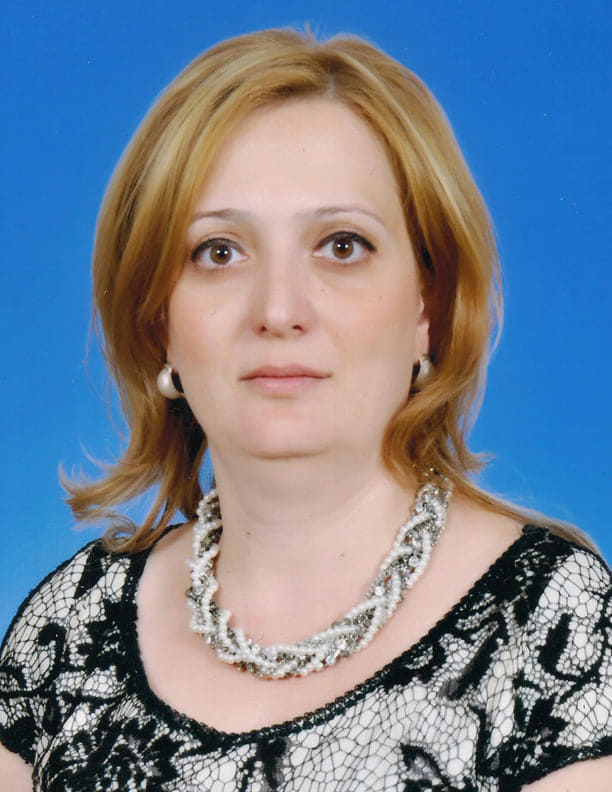 These days, the organization of distance learning has increased the teacher’s reputation. This is the opinion of Tamara Mehrabyan, a teacher at Yerevan’s Vardanants Aspetner N 106 Basic School. “The parents saw how much effort and skills the teacher puts into educating the children, this became an opportunity for parents and students to unite, parents and the team became closer,” she said. According to the teacher, the homework answers are given via Viber․ “Parents send videos on how the children have prepared for class, healthy competition has started in the class. Now we are going through the epic “David of Sassoun”, all the children have sent 10-minute videos, they are telling about the branches of the epic, in great detail, with great enthusiasm, everyone wants to present themselves in a special way, they are sending videos with posters and pictures.
These days, the organization of distance learning has increased the teacher’s reputation. This is the opinion of Tamara Mehrabyan, a teacher at Yerevan’s Vardanants Aspetner N 106 Basic School. “The parents saw how much effort and skills the teacher puts into educating the children, this became an opportunity for parents and students to unite, parents and the team became closer,” she said. According to the teacher, the homework answers are given via Viber․ “Parents send videos on how the children have prepared for class, healthy competition has started in the class. Now we are going through the epic “David of Sassoun”, all the children have sent 10-minute videos, they are telling about the branches of the epic, in great detail, with great enthusiasm, everyone wants to present themselves in a special way, they are sending videos with posters and pictures.
Silva Sulyan, the Director of the secondary school in the border village of Aygedzor, Tavush region, says that it is important that this is a promising process. “It is true that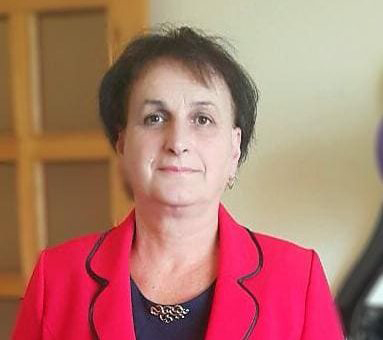 this process started at difficult times, it was problematic, but at the same time it is an opportunity for border villages so that our students do not suffer if they are not specialists and distance learning is organized at school. It should be organized from the beginning, the specialist should join and teach the students here. We have that opportunity, there is a smart room in the school and we can start that process if the Ministry of Education and Science gives a move to this process for the future,” Silva Sulyan said.
this process started at difficult times, it was problematic, but at the same time it is an opportunity for border villages so that our students do not suffer if they are not specialists and distance learning is organized at school. It should be organized from the beginning, the specialist should join and teach the students here. We have that opportunity, there is a smart room in the school and we can start that process if the Ministry of Education and Science gives a move to this process for the future,” Silva Sulyan said.
Problems, negative aspects during distance learning
Teachers point out that some children have had technical problems joining online platforms. The Minister of Education, Science, Culture and Sports Arayik Harutyunyan mentioned this many times. He also called on those who have unused equipment to provide it to the ministry, which in turn will provide it to students and teachers in need.
According to Tate Manukyan, the problem of equipment in their school was settled in the very first days. “There are students who don’t have a computer, the phone doesn’t open the Zoom platform, we work with those students with messengers, and we give instructions and check with Viber. We try to get everyone involved and there are no obstacles. Of course, there are gaps, but I think we will all make conclusions, from the ministry to the teacher and everything will change.”
In Aygedzor, another solution was given to this issue: they underwent two-shift training. “We have received computers from the National Assembly, provided to families with insecure, and many children, so that children do not suffer from this process. It can be said that the teachers had no problem, there were families, the children had one computer or one phone, we went to two-shift training so that we could organize the lesson process with all the children in two shifts, and that was not a problem,” the director of the school Silva Sulyan said.
According to Tamara Mehrabyan, she and the students in need of inclusive education are not excluded from distance learning. If necessary, individual work is carried out with them.
Teachers unanimously note that it is bad for children to be in front of a computer for a long time and of course, that there is no live communication․ “The emotional background that we have in the classroom is absent during the distance learning course,” Tatik Manukyan adds. Silva Sulyan mentions that they miss the noise of children even ․ “The noise of the children, the running, the play, that was at school, we tell them a lot that we missed them, and the children said that they didn’t want to come to school then, but now they want to come, they missed it too. In any case, live communication is very important.”
The role of parents in the process of distance learning
Teachers point out that the role of parents is great in distance learning. In high school, due to the child’s consciousness, parents do not have much to do during classes, “The child also feels bad when the parent prompts, because his classmates see it as well,” Gayane Ordyan says. Tatev Manukyan mentions that as a class teacher she had a problem with coordination and had a lot of contact with the parents, they expressed positive opinions.
In elementary school, of course, it’s much harder to keep more than 30 students in front of the screen. “But the support of the parents, the awareness of the children is so high that they understand in half a word, turn off and turn on the microphones, when needed and they answer. At first, the parents sat next to the children, they wanted to understand my demands, as if it was an open lesson, then they realized that there was no need to sit next to the children,” teacher Tamara Mehrabyan says.
“Today, especially in rural areas, we felt the indifference of parents for a moment. This was just another opportunity for a parent to feel, understand, be more attentive to his child, because he also hears the lesson, sees what the teacher does, his child’s diligence or indifference. Maybe after this the parents will be more careful,” Silva Sulyan presents.
The workload of teachers has increased
In a conversation with us, the pedagogues mentioned that the school schedule was more systematic at school, and now it takes longer to organize the course.
“Before, if we worked until 3 o’clock, now we work until 10 or 11 at night. We send the instructions, check them, make notes, make corrections, send them back, we are constantly in that continuous process,” Tatev Manukyan said.
The principal of the school also mentions that she does not receive any complaints from the teachers, but ․․․ “I also study, I know, if we train for 45 minutes at school, in this case there is a problem with communication for a while, the child can’t join, or joins late, we explain to him/her again, but that’s nothing, we are called to raise children, in order to be educated, and we must meet them.”
“The work has become more complicated organizationally, but the professional work is the same. At first there was a slight panic that we might not be able to, but now everything is clear and organized. In terms of time, I don’t think it takes much time,” Gayane Ordyan said.
“It takes a lot of time, we work 24 hours a day at home, my phone is constantly on, imagine 33 children a day sending videos, if I say that today these 5-6 children have to send videos, it’s the same, all 33 of them send. It is a competition, they are waiting for me to put that video in the group, for everyone to see it, the enthusiasm is very great,” Tamara Mehrabyan says.
Emis.am e-register does not justify itself yet
In recent days, an e-register has been introduced in the emis.am website section, which is still in the adjustment stage. According to the teachers, a number of problems arise when conducting student assessments, in addition, it seems that there is a repetition of work, as before the Dasaran.am website was launched, in which the marks were registered, of course, not necessarily.
“Time will show the usefulness of the book, but I can say that in the first days we had big problems, we entered, the classes, the names were mixed, and it was a mess. Even now, sometimes there are failures, the platform is still under development, but I think this helps the ministry to understand how much work is being done. Dasaran.am, in my opinion, is a very good platform, I have used that platform, now due to lack of time, in order not to burden the children, we are working with Imdproc.am program so that it is not too complicated,” the teacher of School No. 54 said.
The director of Aygedzor School mentions that in the future all this will have to be done in a real textbook. “For us, the state document is the class register, I don’t think the e-book is very necessary now, we get double work, instead the teacher could have prepared for the lesson,” she added.
There are also interesting incidents during the work; the response of teachers’ family members
Those who run away from class are also online, not only the students but also their parents and relatives appear in front of the screen. “And calling a rooster ․․․ When the child is sitting in the classroom (communication is better outside), we hear the conversation of the neighbors and the music, life is not standing still, sometimes we hear the secrets of the family,” Silva Sulyan laughs.
“Sometimes, the student turns off the video call, or they say I can’t join, I can’t enter, and can I join another hour? And you already understand that he is not ready for class or doesn’t want to introduce himself,” Tatev Manukyan said.
A small school is being set up in Gayane Ordyan’s house: she is a teacher, her three children are students. “My three children and I are in class at the same time, we are no longer disturbing each other, each of us has our own class schedule and corner, and we meet in the middle of the class. Of course, the other members are complaining, but they have already got used, for example, my husband is doing the work remotely, and now we have no alternative. ”
The children also come to help Tamar Mehrabyan, as this has been a big challenge for the teachers. “For a moment I took the phone away from my face, one of the students said, ‘Comrade Mehrabyan, please may you approach,’ or another said, may I go to the bathroom,'” she said.
If online learning – only a safe one
When using the Internet, it is important to follow a number of safety rules. MESCS mentions, “Dear teachers, professors and students, when using the Zoom program, pay attention to the security of the lessons, protecting them from outer intrusions.”
Information security expert Samvel Martirosyan advises teachers and lecturers.
- Post your lesson links in closed groups so that they are only available to class participants.
- Give the password only to the participants of the given class, not to the whole school or university group.
- Activate the program’s “Enable waiting room” button, thus completely tracking the input of the lessons.
To the students:
- Do not pass the password for your class to outsiders, do not put it in different groups or pages. That password is only for you.”
Teachers also attach importance to this fact․ “Obviously, we can’t follow 100% who used and how, but we are directing, and since we are at home now, we can be more consistent and see how they use the Internet,” Tatev Manukyan said.
According to Gayane Ordyan, the shortcomings of the Internet have been before this platform and the positive should be learned.
In the end, let us remind you that according to Article 38 of the Constitution, everyone has the right to education.
Alisa Chilingaryan

